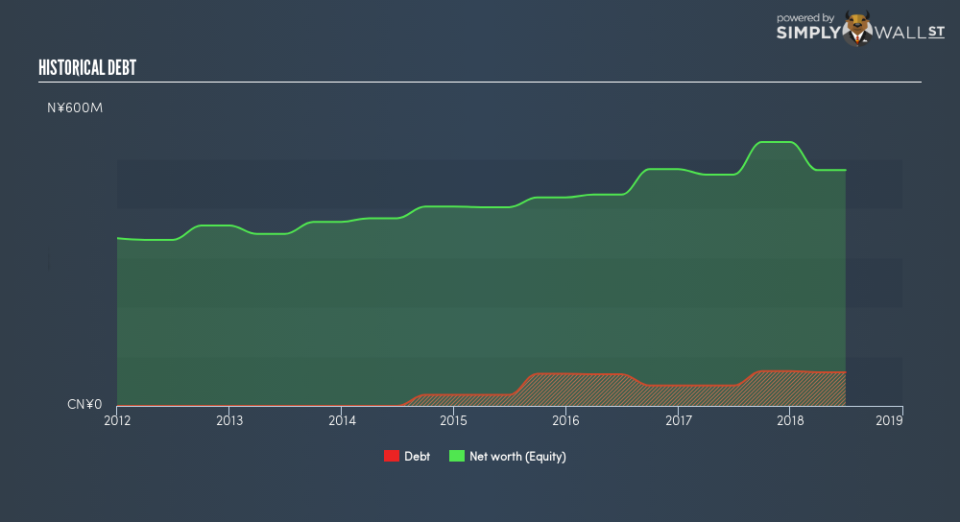Tang Palace (China) Holdings Limited (HKG:1181): Time For A Financial Health Check

Investors are always looking for growth in small-cap stocks like Tang Palace (China) Holdings Limited (HKG:1181), with a market cap of HK$1.2b. However, an important fact which most ignore is: how financially healthy is the business? Assessing first and foremost the financial health is crucial, as mismanagement of capital can lead to bankruptcies, which occur at a higher rate for small-caps. Here are few basic financial health checks you should consider before taking the plunge. Nevertheless, given that I have not delve into the company-specifics, I suggest you dig deeper yourself into 1181 here.
How much cash does 1181 generate through its operations?
1181’s debt levels surged from CN¥41m to CN¥68m over the last 12 months made up of predominantly near term debt. With this rise in debt, 1181’s cash and short-term investments stands at CN¥507m for investing into the business. Additionally, 1181 has produced cash from operations of CN¥204m during the same period of time, resulting in an operating cash to total debt ratio of 300%, signalling that 1181’s debt is appropriately covered by operating cash. This ratio can also be interpreted as a measure of efficiency as an alternative to return on assets. In 1181’s case, it is able to generate 3x cash from its debt capital.
Does 1181’s liquid assets cover its short-term commitments?
Looking at 1181’s most recent CN¥441m liabilities, it seems that the business has maintained a safe level of current assets to meet its obligations, with the current ratio last standing at 1.58x. Usually, for Hospitality companies, this is a suitable ratio as there’s enough of a cash buffer without holding too much capital in low return investments.
Can 1181 service its debt comfortably?
With debt at 14% of equity, 1181 may be thought of as appropriately levered. This range is considered safe as 1181 is not taking on too much debt obligation, which may be constraining for future growth.
Next Steps:
1181’s high cash coverage and low debt levels indicate its ability to utilise its borrowings efficiently in order to generate ample cash flow. In addition to this, the company will be able to pay all of its upcoming liabilities from its current short-term assets. This is only a rough assessment of financial health, and I’m sure 1181 has company-specific issues impacting its capital structure decisions. I recommend you continue to research Tang Palace (China) Holdings to get a more holistic view of the stock by looking at:
Future Outlook: What are well-informed industry analysts predicting for 1181’s future growth? Take a look at our free research report of analyst consensus for 1181’s outlook.
Valuation: What is 1181 worth today? Is the stock undervalued, even when its growth outlook is factored into its intrinsic value? The intrinsic value infographic in our free research report helps visualize whether 1181 is currently mispriced by the market.
Other High-Performing Stocks: Are there other stocks that provide better prospects with proven track records? Explore our free list of these great stocks here.
To help readers see past the short term volatility of the financial market, we aim to bring you a long-term focused research analysis purely driven by fundamental data. Note that our analysis does not factor in the latest price-sensitive company announcements.
The author is an independent contributor and at the time of publication had no position in the stocks mentioned. For errors that warrant correction please contact the editor at editorial-team@simplywallst.com.

 Yahoo Finance
Yahoo Finance 
